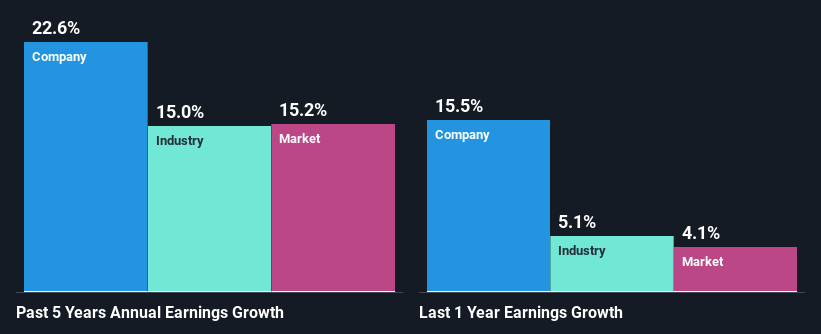Is Perdoceo Education Corporation's (NASDAQ:PRDO) Recent Stock Performance Tethered To Its Strong Fundamentals?
Most readers would already be aware that Perdoceo Education's (NASDAQ:PRDO) stock increased significantly by 32% over the past three months. Since the market usually pay for a company’s long-term fundamentals, we decided to study the company’s key performance indicators to see if they could be influencing the market. In this article, we decided to focus on Perdoceo Education's ROE.
ROE or return on equity is a useful tool to assess how effectively a company can generate returns on the investment it received from its shareholders. Put another way, it reveals the company's success at turning shareholder investments into profits.
View our latest analysis for Perdoceo Education
How To Calculate Return On Equity?
Return on equity can be calculated by using the formula:
Return on Equity = Net Profit (from continuing operations) ÷ Shareholders' Equity
So, based on the above formula, the ROE for Perdoceo Education is:
16% = US$127m ÷ US$792m (Based on the trailing twelve months to June 2023).
The 'return' is the amount earned after tax over the last twelve months. So, this means that for every $1 of its shareholder's investments, the company generates a profit of $0.16.
What Has ROE Got To Do With Earnings Growth?
Thus far, we have learned that ROE measures how efficiently a company is generating its profits. We now need to evaluate how much profit the company reinvests or "retains" for future growth which then gives us an idea about the growth potential of the company. Assuming everything else remains unchanged, the higher the ROE and profit retention, the higher the growth rate of a company compared to companies that don't necessarily bear these characteristics.
A Side By Side comparison of Perdoceo Education's Earnings Growth And 16% ROE
To begin with, Perdoceo Education seems to have a respectable ROE. Especially when compared to the industry average of 10% the company's ROE looks pretty impressive. This certainly adds some context to Perdoceo Education's exceptional 23% net income growth seen over the past five years. We reckon that there could also be other factors at play here. For instance, the company has a low payout ratio or is being managed efficiently.
Next, on comparing with the industry net income growth, we found that Perdoceo Education's growth is quite high when compared to the industry average growth of 15% in the same period, which is great to see.
Earnings growth is a huge factor in stock valuation. It’s important for an investor to know whether the market has priced in the company's expected earnings growth (or decline). This then helps them determine if the stock is placed for a bright or bleak future. If you're wondering about Perdoceo Education's's valuation, check out this gauge of its price-to-earnings ratio, as compared to its industry.
Is Perdoceo Education Efficiently Re-investing Its Profits?
Perdoceo Education's three-year median payout ratio to shareholders is 7.6%, which is quite low. This implies that the company is retaining 92% of its profits. So it looks like Perdoceo Education is reinvesting profits heavily to grow its business, which shows in its earnings growth.
Conclusion
In total, we are pretty happy with Perdoceo Education's performance. Particularly, we like that the company is reinvesting heavily into its business, and at a high rate of return. Unsurprisingly, this has led to an impressive earnings growth. Having said that, on studying current analyst estimates, we were concerned to see that while the company has grown its earnings in the past, analysts expect its earnings to shrink in the future. Are these analysts expectations based on the broad expectations for the industry, or on the company's fundamentals? Click here to be taken to our analyst's forecasts page for the company.
Have feedback on this article? Concerned about the content? Get in touch with us directly. Alternatively, email editorial-team (at) simplywallst.com.
This article by Simply Wall St is general in nature. We provide commentary based on historical data and analyst forecasts only using an unbiased methodology and our articles are not intended to be financial advice. It does not constitute a recommendation to buy or sell any stock, and does not take account of your objectives, or your financial situation. We aim to bring you long-term focused analysis driven by fundamental data. Note that our analysis may not factor in the latest price-sensitive company announcements or qualitative material. Simply Wall St has no position in any stocks mentioned.

